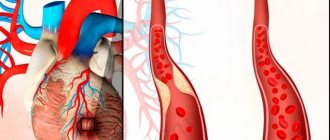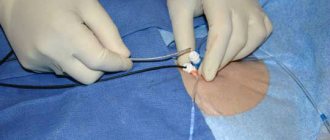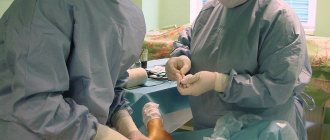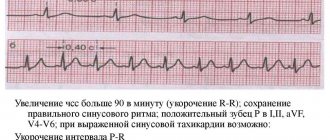Types of heart rhythm disturbances and their symptoms
There are several dozen types of arrhythmias.
They differ in the way of manifestation, course and mechanism of development. For example, tachycardia (increased heart rate) is most often diagnosed, but it mainly occurs due to external factors, unlike other varieties. Below are the most common types of arrhythmia:
- bradycardia;
- atrial fibrillation;
- extrasystole;
- tachycardia;
- heart block.
Bradycardia
Bradycardia is characterized by attacks of decreased rhythm down to 50 beats per minute or lower. Among all the signs of cardiac arrhythmia in women and men, the most common are:
- general weakness;
- decrease in pressure;
- fast fatiguability;
- attacks of dizziness.
Bradycardia can be seen on the electrocardiogram. The doctor will evaluate the functioning of the heart and identify the cause of the arrhythmia. It mainly manifests itself due to hormonal changes, heart pathologies and infections. Treatment is carried out with medication.
Tachycardia
With tachycardia, the heart rate increases. There can be over 100 contractions per minute. Arrhythmia can be pathological, occurring due to heart disease, or physiological, appearing as a result of exposure to external factors. In the first case, drug treatment will be required, and in the second, lifestyle adjustments will suffice. The danger of tachycardia is that the amount of blood ejected is reduced, causing the ventricles to not fill sufficiently. As the malfunction develops, blood pressure often increases and the functioning of internal organs is disrupted due to poor nutrition.
The main signs of this arrhythmia are given below:
- rapid pulse;
- feeling of discomfort in the chest;
- loss of consciousness;
- decreased visual acuity;
- dizziness.
Extrasystole
Extrasystole is manifested by untimely contraction of the heart. Arrhythmia predominantly occurs in the ventricles. After experiencing stress, excessive fatigue, drinking coffee and other drugs that have a stimulating effect, it can manifest itself even in a healthy person. In other cases, the cause lies in heart disease.
Patients are mainly concerned about the feeling of heartbeat (strong beats or sudden stop). Among other symptoms, the following manifestations of extrasystole stand out:
- feeling of lack of oxygen;
- excessive sweating;
- unreasonable fear and panic;
- paleness of the skin.
Extrasystolic attacks caused by disruptions in the nervous system and psycho-emotional disorders can be cured with rest and lifestyle adjustments. If we are talking about disorders in other body systems, including the cardiovascular system, then they need to be eliminated to alleviate the condition.
Atrial fibrillation
People with atrial fibrillation (atrial fibrillation) experience chaotic, incomplete contractions of the atria.
During an attack, their frequency can reach 300-400 beats per minute. Such twitching provokes serious disruptions in blood circulation. If the paroxysm lasts more than 2 days, then there is a high probability of blood clots and stroke. The chronic version of this arrhythmia can last up to 7 days. The clinical picture of the failure depends on the condition of the heart muscle. Initially, the patient is tormented by periodic paroxysms. In some cases, atrial fibrillation becomes chronic, while in others it appears occasionally and does not progress over time. Symptoms when an attack occurs are as follows:
- feeling of heartbeat;
- excessive sweating;
- chest pain;
- dyspnea;
- lack of oxygen.
Heart blocks
A disruption of the conduction system of the heart is called blockade. Its incomplete form (grade 1, 2) is characterized by a signal delay due to damage to part of the fibers. The full variety (3rd degree) manifests itself when it is impossible to transmit impulses to the lower sections. The contraction occurs due to ectopic foci.
The blockade can be congenital or acquired over time. If it comes to the first form and the heart rate does not fall below 50 beats per minute, then lifestyle correction is enough. In the presence of impaired conductivity of the acquired type, treatment consists of taking medications to improve energy metabolism and vitamin complexes. In advanced cases, it may be necessary to install a pacemaker or defibrillator.
The blockade is characterized by the following symptoms:
- fast fatiguability;
- feeling of interruptions in heart rhythm;
- the appearance of spots before the eyes;
- dizziness;
- general weakness;
- noise in ears;
- cold sweat;
- pale skin;
- seizures;
- loss of consciousness.
How does the cauterization procedure take place?
During the intervention, the patient is under constant control of an X-ray machine and supervision of specialists. General anesthesia is not used here, only local anesthesia. The patient does not experience any painful sensations during the entire operation, only slight discomfort on a psychological level is possible - the fear of the operation is always present. If the patient is too nervous, he is prescribed sedatives.
A catheter is inserted into a large artery of the patient (hip or under the collarbone), through which hemostatic introducers are inserted to conduct research and create protection for the vessels. Afterwards, electrodes are inserted here so small that they cannot damage the blood vessels and easily penetrate directly into the heart to the place where action is needed.
During the surgical intervention itself, a blockade is arranged so that the procedure itself does not cause interruptions in the heart rhythm.
The main stage is cauterization of selected areas. This is a complex procedure that requires high professionalism of the doctor and jewelry precision. The duration of the intervention is individual and depends on the complexity of the procedure. During cauterization, the tissues are heated to a certain temperature (50 degrees), during which proteins are destroyed and a burn occurs, the cardiogram is normalized, but the effect continues for some time. Now you need to wait about an hour and stimulate the heart again to check whether unnecessary impulses will form again.
During the entire time, the patient is conscious, so immediately after surgery he does not need a gurney, but exertion is prohibited in the first two days, so the person operated on is left in the hospital for this time.
There is no pain or any discomfort after the operation. A tight bandage is applied to the catheter entry site, followed by a cold compress.
The person should avoid physical activity for some time after surgery.
How to prepare and carry out treatment
Before the operation begins, the patient is given local anesthesia. After the drug begins to take effect, the doctor punctures a large artery, after which a catheter is slowly inserted into the puncture site until it reaches the heart area. Next, the electrode cauterizes the cardiac tissue at the site of excitation. After the burn from the operation heals, scar tissue forms at the site and unnecessary contractions no longer occur.
After completion of surgical treatment, the patient remains in the hospital for several more days under the supervision of a doctor. A tight bandage is applied to the place where the puncture was made and cold is applied for several days. A few days later the patient is discharged and sent home.
For some time, a person may still feel discomfort in the place where the puncture was performed. After surgery, for the first time you should not burden yourself with lifting and carrying heavy objects and playing sports. With this treatment option there are practically no complications, the success rate of the operation exceeds 90%.
After treatment, no scars or scars remain; only a small dot is visible at the puncture site. This method of getting rid of arrhythmia is the most effective, but it is prescribed only if the effectiveness of conservative treatment is reduced to zero.
Arrhythmia is treated by cauterization of the heart
January 28, 2010 06:22
American scientists have confirmed that so-called catheter ablation (cauterization of heart tissue) is effective for treating atrial fibrillation in cases where traditional drug therapy is unable to help the patient.
Atrial fibrillation ( atrial fibrillation) is a type of arrhythmia in which the atria contract in an uncoordinated manner relative to the ventricles of the heart. In this case, there is a feeling of tightness in the chest, pain behind the sternum and other symptoms. In case of disturbance of blood flow caused by atrial fibrillation. Blood clots can form in the blood, which can migrate through the bloodstream and cause a stroke or heart attack.
With this disease in the inner wall of the atria, outside the main conduction system of the heart. Independent foci arise that produce electrical impulses similar to those that cause the heart to contract. In turn, these impulses confuse the atria and cause them to contract incorrectly.
Traditionally, doctors have tried to suppress these hot spots with medications. however, drug therapy is effective in only half of patients. In recent years, new methods of treating atrial fibrillation have emerged - so-called catheter ablation. It involves inserting a catheter into the cavity of the right atrium and identifying foci of excitation of the heart muscle. After this, the lesions are destroyed using cauterization with an electric frequency discharge.
Advantages and disadvantages of catheter ablation
Why is this method so good? Many experts note that ablation surgery can permanently eliminate problems with cardiac arrhythmia. Advantages:
- Low invasiveness. The patient does not have an incision.
- Minimum preparation. Arrhythmia is eliminated quickly, and there is no need to be afraid of worsening the condition.
- Minimum rehabilitation period. Bed rest is not required. The person returns to normal life on the second day after the operation.
- Reliability of cardiac ablation. Patients notice an improvement in heart function, as well as an almost complete elimination of arrhythmia problems.
Many patients report pain for a long time after surgery, which can also be noted as a disadvantage. In order to minimize discomfort, doctors do special stress tests in those people who suffer from nervous disorders or increased excitability. Before the operation, sedatives are prescribed. Taking such drugs will have a positive effect not only on the patient’s mood before the intervention, but will also promote healthy and long sleep.
Rehabilitation
After the operation, a rehabilitation period is required, but it is not long. For the first few days, the person remains under medical supervision, then he is sent home. The patient can return to their normal lifestyle almost immediately, but in the first month it is recommended to follow some rules.
These include the following:
- Do not lift heavy objects.
- Do not make sudden movements.
- Do not engage in heavy physical labor.
- Do not take any medications without your doctor's permission.
The essence of the procedure, features of implementation, rehabilitation
General description of the manipulation
Cauterization of heart tissue is an operation aimed at eliminating foci of arrhythmia using physical influence on them. A modern method of treating arrhythmia is radio wave catheter ablation. The procedure uses a catheter that emits a high-frequency electrical current. Thanks to radiofrequency energy, the pathological focus is destroyed.
Treatment of arrhythmia using the cauterization method is carried out under local anesthesia, which eliminates pain and does not have the disadvantages of operations performed under general anesthesia.
Preparation and conduct of cauterization for arrhythmia
Before the operation, the patient is shown preparatory measures. The patient must undergo the following diagnostic procedures:
- general and biochemical blood test;
- ECG;
- MRI of the heart with the introduction of a contrast agent;
- analysis to detect HIV infection, syphilis, hepatitis.
Before surgery, the patient must:
- 3 days before the scheduled procedure, stop taking hormonal medications, as well as medications against arrhythmia;
- refuse food 12 hours before surgery;
- stop taking liquids 8 hours before surgery;
- remove hair in the groin area or armpits: a catheter will be inserted here.
Before starting the surgical process, the patient is given a local anesthetic. After it begins to act, a large artery (usually the femoral) is punctured.
A catheter is then inserted through the artery until it reaches the heart area. An electrode is used to cauterize the heart tissue in the area of the excited focus. When exposed, the fabrics heat up to a maximum of 60 degrees.
How catheter ablation occurs is shown in detail in this demo video:
After the operation is completed, a tight bandage is applied to the puncture site. The application of cold compresses is also indicated.
The patient remains in a hospital under the supervision of doctors for several days after the operation. On the first day after surgery, an electrocardiogram is performed every 6 hours to monitor the frequency of contraction of the heart muscle.
The patient’s body temperature, blood pressure, urine output are also measured, and an ultrasound of the heart is performed 1-2 times. The patient is discharged after a few days.
There may be some discomfort in the area of the puncture for some time, but it will go away over time. After the operation, it is forbidden to get out of bed due to the risk of bleeding in the area where the puncture was made.
Features of the rehabilitation period
During rehabilitation, which lasts 2-3 months, sports and heavy physical labor are contraindicated for the patient. During this period, antiarrhythmic drugs, indirect anticoagulants, and a number of other medications will be prescribed.
The guarantee of a successful operation is about 90%. The possibility of complications if the rules of rehabilitation are followed is practically excluded.
During the postoperative rehabilitation course, you should refuse:
- bad habits (smoking and drinking alcohol);
- eating salt in large quantities;
- tea and coffee;
- Eating fatty foods: during rehabilitation, you should try to reduce excess weight, if any, through diet.
The patient needs to pay special attention to the diet both during the rehabilitation period and in the future. To prevent repeated dysfunctions of the cardiovascular system, it is necessary to avoid foods that increase cholesterol levels in the blood and contribute to its deposition on the walls of blood vessels.
The consumption of animal fats, semi-finished products, salty and fried foods, and smoked foods should be limited or completely abandoned.
During rehabilitation, adequate physical activity is indicated, but sports can be played a few weeks after the operation and only with the permission of the doctor. Walking, light jogging, and therapeutic exercises are useful to strengthen the cardiovascular system.
Carrying out cauterization
- Administration of local anesthesia intravenously. Sedation is usually used in conjunction with anesthesia.
- A needle is used to puncture the wall of the blood vessel.
- The catheter is passed through the guidewire into the heart cavity. All this happens under the mandatory control of an X-ray machine.
- The next stage is recording signals. All these signals are transmitted to an intracardiac electrocardiograph. Thus, even more accurately than with MRI, the source of arrhythmia that creates myocardial dysfunction is identified. They have not started cauterization directly yet: first it is necessary to carry out a series of tests to provoke symptoms. Tests are only carried out if the patient feels well.
- Then comes the cauterization itself. The tissues are heated under the influence of the electrode to almost 60 degrees, and an artificial blockade occurs.
- Before the control electrocardiogram, it is impossible to judge the successful outcome of the operation. If it turns out that the desired effect could not be achieved, an artificial pacemaker will be installed immediately. After this, doctors remove all the equipment and apply a fixing bandage to the operated area.
- Upon completion of the operation, the patient is taken to the ward on a gurney. For the next 24 hours, he is given strict bed rest. In cases where punctures of the femoral arteries were performed, it is prohibited to bend your knees during this period.
- The entire process from start to finish can take from 1.5 to 6 hours. This depends on factors such as the severity of the patient’s condition, the form of the arrhythmia, the location of the source of pathology and the difficulty of accessing it.
- If the patient feels well after 5 days, it will be possible to prepare for discharge.
The result of the intervention is scarring of those areas of the myocardium that were affected by arrhythmia. Cauterization is carried out until the sore spots are burned to a degree sufficient to stabilize the heart. It is very important to target the impact and minimize it. Such an intervention does not destroy the structure of the muscle, but only makes it function correctly. Nearby tissues will not be affected in any way. After ablation, the tone of the heart muscle increases and its correct rhythm is restored to normal levels.
Patients who have undergone cauterization are always concerned about the effectiveness of the manipulation performed. Ablation is considered to be highly effective. Most patients are completely cured of the disease. Very rarely, relapses will occur at varying intervals. The lack of effect is associated with improper treatment of pathological areas and repeated cauterization may be prescribed.
What will be the cost of the operation?
The operation itself is carried out both in public medical institutions and in private clinics. Depending on this, the pricing for its implementation is determined. The cost will also directly depend on the qualifications of the doctor and his work experience. The minimum price for ablation is 20 thousand rubles, the maximum is 290 thousand. Treatment for gastric arrhythmia will be the most expensive.
Treatment methods: medication and surgery
Two treatment methods are used:
- Medication.
- Surgical.
Surgeries to get rid of heart problems are rarely performed and only in cases where treatment with drugs and physical procedures does not lead to positive results. A more gentle method, medication, includes the use of a whole complex of drugs that will help increase vascular tone and also help regulate heart rate.
Arrhythmia is usually a symptom of existing pathologies:
- ischemic disease;
- heart failure;
- arterial hypertension.
Medicines prescribed to relieve symptoms stop the progression of the underlying disease. These include:
- Diuretics;
- Statins;
- Beta-adrenergic blockers;
- Sortans
- Specially developed antiarrhythmic drugs (“Amiodarone”, “Propafenone”, “Sotalol”) are capable of equalizing the heart rate of a heart working in an unnatural rhythm.
Surgeries for arrhythmia are indicated only in cases where drug treatment does not bring results. Among the effective and reliable methods, the following stand out:
- insertion of a pacemaker;
- defibrillator implantation;
- radiofrequency ablation.
A pacemaker is a box that contains an electronic device and a battery. There are two wires connected to it. During the operation, wires are passed through the vessels to the atrium and ventricle. During surgery, local anesthesia and a 3-4 cm incision are made. The pacemaker delivers electrical impulses that irritate the myocardium and sets the correct heart rhythm. Such devices last for 10 years.
A defibrillator is similar in its characteristics and purposes to a pacemaker. Its electrical discharges normalize heart rhythm and eliminate arrhythmia. After an incision is made in the chest, the electrodes are directly inserted and adjusted. When the optimal position of the defibrillator is found and the desired frequency of electrical impulses is set, the incision in the chest is sutured.
Radiofrequency ablation (RFA) was developed at the end of the last century. It is less invasive and has positive reviews not only from patients, but also from leading specialists. Through special punctures, a procedure is carried out to cauterize problem areas. RFA completely cures the patient of many types of heart rhythm disorders.
Treatment of arrhythmia by cauterization
A chance to live. The latest technologies against cardiac arrhythmia and other cardiac diseases
Heart Disease #8212; according to statistics #8212; one of the main causes of early mortality among Russians. But doctors assure that the situation can be changed. Modern technologies have advanced so much that now even a seriously ill patient often does not need to be operated on.
Heart Disease #8212; according to statistics #8212; one of the main causes of early mortality among Russians. But doctors assure that the situation can be changed. Modern technologies have advanced so much that now even a seriously ill patient often does not need to be operated on.
Cardiac surgeons themselves hardly even call this unique operation an operation #8212; here, they say, the word #171;procedure#187; is more suitable. Although just two years ago we could only dream of treating cardiac arrhythmia in this way. There is no scalpel, the patient is conscious, there is a three-dimensional image of the heart on the monitor. As doctors say, these technologies are a kind of satellite navigation in medicine.
New technologies make it possible to identify areas of arrhythmia with an accuracy of up to 10ths of a millimeter. In simple terms, they are cauterized, and after a few hours the patient can forget about the terrible disease.
Leo Bockeria, director of the Scientific Center for Cardiovascular Surgery named after A.N. Bakuleva: #171;Today a number of clinics have appeared that operate at the most modern level. I say this very sincerely, because we always said it with a stretch.
According to Leo Boqueria, one of the important reasons for this #8212; the ever-increasing interest of the Russian Ministry of Health in the problems of cardiology.
The value of being able to do unique operations locally is difficult to overestimate. After all, patients often, even having a referral for free treatment, cannot get to the capital. New clinics #8212; That's thousands of lives saved. Cardiologists are accustomed to fighting for each of them. Fight the same way as for the life of 9-month-old Ksyusha. She underwent surgery at the Bakulev Center today for several hours. The girl has a congenital heart defect #8212; at her age she should weigh 10-12 kilograms, not 5 as she does now. But only 3-4 months will pass, the doctors assure, and Ksyusha will be like all ordinary children.
Treatment of cardiac arrhythmia with cauterization #8212; description
The required area is determined by special studies. Normally, the heart muscle contracts at regular intervals with an average frequency of 60–90 beats/min. The number of muscle contractions per minute can decrease or increase, depending on the current needs of the body. If, even at rest, the periods of contraction of the heart muscle change, this indicates the presence of cardiac arrhythmia.
Both medications and surgical methods are used to treat cardiac arrhythmias. However, the effectiveness of drug treatment is not very high, so many are faced with the need for surgical intervention.
How is cardiac arrhythmia treated using cauterization?
When treating cardiac arrhythmia through cauterization, the heart rhythm is completely restored. The advantages of this method include good tolerability of the procedure. An important factor is that after the operation there are no stitches or scars, and, as a rule, there is no need to take any medications to treat cardiac arrhythmia.
Catheter ablation of atrial fibrillation
The procedure is more effective for patients with frequent short paroxysms of AF; The effectiveness of the procedure for long-term AF is significantly lower.
Therefore, to decide whether a procedure is advisable, the doctor weighs the potential benefits and possible risks for a particular patient, choosing the optimal solution for that patient at the time. Although this procedure carries some risks, it provides a real opportunity for recovery. Modern computer technologies will improve the effectiveness of this procedure in the coming years.
Atrial flutter.
The optimal treatment method for patients with frequently recurring paroxysms of atrial flutter is also ablation (cauterization), which gives positive results for approximately 90% of patients.
Typically, persistent VT is treated by suturing a special device #8212; an implantable cardioverter-defibrillator (ICD), which allows you to interrupt severe attacks of arrhythmia using an electrical discharge from the inside.
Cauterization - heart surgery for arrhythmia: reviews
Almost 90% of people who underwent the cauterization operation completely got rid of various types of arrhythmia. The remaining 10% required repeated intervention because the disease relapsed, which happens when the doctor is insufficiently qualified. But a repeat procedure with a good specialist will solve the problem.
Elimination of cardiac arrhythmia also removes all the accompanying symptoms that did not allow a person to live normally: shortness of breath, fainting, dizziness, etc. More information about life after cauterization of the heart can be found on forums and in patient reviews.
Heart surgery for arrhythmia is performed both in the Russian Federation and abroad. The most important thing for a sick person is the right choice of clinic, for which you need to carefully read patient reviews.
The most popular clinics are in Israel and Germany - countries in which the level of treatment is quite high, the clinics use innovative equipment and technologies, and the specialists have extensive experience in performing such operations, and the level of service is excellent. On average, in Israel a patient needs about 20 thousand dollars, while in Germany – 30 thousand. Moscow clinics request much smaller amounts, and there is no need to fly, but the choice of a medical institution and a doctor is always up to the patient.
The cost of the intervention depends on the complexity of the procedure and the size of the area that will be treated. In order to determine the final price, a person must undergo an examination, and a doctor must confirm the feasibility of such treatment.
Cauterization of the heart: principle
The principle of the operation comes down to the introduction of several catheters - they provide the ability to record an ECG from the inside. Such intracardiac cardiograms make it possible to determine the diagnosis with high accuracy. After identifying the point in the heart responsible for the disorder, it is eliminated using an ablation catheter, and the affected cardiac tissue is cauterized using an electrode.
Advantages and disadvantages of cauterization
This operation has many advantages:
- the ability to relieve arrhythmia that cannot be treated with medications;
- According to statistics, most patients easily tolerate the procedure;
- after surgery, a long period of time for rehabilitation is not required;
- complete absence of scars;
- there is no need to resort to general anesthesia;
- the likelihood of a medical error during the operation is reduced to zero.
Indications for surgical treatment of atrial fibrillation
Surgical intervention for the disease in question may be prescribed in the following situations:
- Lack of positive changes when using antiarrhythmic therapy. In addition, the symptoms of atrial fibrillation become more pronounced. A similar condition may occur in the event of a late visit to a specialist for qualified medical assistance.
- The constant nature of atrial fibrillation, against the background of which there is a rapid development of heart failure.
- Negative reaction of the body to antiarrhythmic drugs.
Video: Atrial fibrillation - how to start treatment on time?
In any case, the decision to perform an operation is made exclusively by the cardiologist, after carrying out appropriate diagnostic measures and observations.
What is the essence of the method?
Cauterization is also called ablation. This is a minimally invasive endovascular surgery. It is prescribed when a pathological focus is formed that prevents the normal passage of impulses.
Cauterization of the heart against arrhythmia allows you to create an artificial necrotic focus. Cardiomyocytes located in it lose their functional abilities. The rays create a heart block, which prevents the occurrence of impulses generated at the moment of relaxation of the heart muscle and disrupting the functioning of the organ.
https://www.youtube.com/watch?v=8EdjSUaNKo0
If the patient suffers from arrhythmia, then this type of intervention is not always indicated. This is due to the advantages and disadvantages of treatment. Therefore, the patient is first examined, and only then a decision is made about therapy.
The procedure has an advantage over others due to:
- Minimally invasive. The operation is performed without making wide incisions. During the procedure, the artery wall is only pierced and access to the heart is gained using a catheter.
- Good tolerability and rapid recovery. With extensive interventions, organ functions are impaired, so the rehabilitation period takes a long time. There is no need for direct access to the heart during the ablation process. The picture is displayed on the monitor and thus all cavities are examined in detail and the location of the pathological focus is revealed.
- No scars on the body at the site of catheter insertion. In this area, the tissue is restored without rough connecting elements. When they appear, a scar is formed that lasts forever.
- Painless. During the treatment process, general anesthesia is not required. But the patient does not feel pain. In some cases, there is a feeling of pressure in the chest area, but nothing more. The discomfort goes away immediately after the operation is completed.
The negative aspects of the procedure are the likelihood of complications. The risk of their occurrence is higher if the patient has diabetes, coagulation system disorders, or advanced age. For these people, this technique is dangerous due to the possibility of:
- Arterial bleeding at the site of catheter insertion.
- Damage to the heart muscle during exposure to rays.
- Narrowing of the arteries of the lungs.
- Violation of the integrity of the vessel during catheter insertion.
- Blood clot formation.
- Disorders of the conduction system, which will further aggravate the situation.
All these phenomena occur very rarely. Most often, the patient begins to bleed from the artery.
This is facilitated by incorrect application of the bandage and failure to comply with the regimen by the patient. To avoid complications, the patient should not get out of bed for 24 hours after the intervention.
In most cases, the operation is successful. With its help, a person gets rid of the discomfort associated with impaired heart function.
Cauterization for arrhythmia is a heart operation that helps restore normal heart rhythm. Its essence lies in the destruction of foci that produce pathological impulses. After their elimination, the rhythm is completely normalized.
This treatment gives good results, but its advantage is not only its effectiveness. There are also such advantages as:
- Less traumatic, which prevents the development of bleeding.
- No visible marks after surgery. Patients do not develop any terrible scars on their skin.
- Painless. Local anesthesia is used, in which the person does not feel anything, but remains conscious.
- Rapid recovery of the body. After just a few days, the patient has the opportunity to return to normal life and go home from the hospital.
During cardiac cauterization for arrhythmia, the patient is conscious
How is the operation performed?
Surgery begins with the introduction of anesthesia. Anesthesia is injected exactly into the area where the puncture is planned to be performed. All equipment is checked so that important vital signs, such as pulse, blood pressure, heartbeat, are monitored by doctors.
Next, they move directly to the operation itself. It is carried out as follows:
- The area where the vessel is located is treated with an antiseptic, then sterile material is applied.
- The vascular wall is pierced with a needle, which is equipped with a special conductor.
- A catheter is inserted into the vessel through the specified conductor. This manipulation is performed under X-ray control. The catheter is passed into the heart cavity.
- Next, an intracardiac electrocardiogram is performed to identify exactly where the focus is located that produces pathological impulses.
- Before cauterization, tests are done to provoke manifestations of arrhythmia.
- Then the lesions are cauterized using an electrode. It heats the tissue to a high temperature - about 60 degrees. As a result, an artificial blockade is created that prevents the pathological impulse from reaching the heart.
- Next, electrocardiography is performed to check the result of therapy. If the rhythm is restored, the operation is completed and the patient is sent to the ward.
Cardiac surgery is a responsible process that can last several hours
Surgery can last for different periods of time depending on the severity of the pathology and the number of lesions. Cauterization can take from one and a half to 6 hours.
Contraindications
Although this heart surgery is very effective and has many positive reviews, it has its contraindications. These include the following points:
- The last stages of development of myocardial infarction.
- Angina pectoris.
- Anemia.
- Severe heart disease.
- Disturbances in the functioning of the kidneys and respiratory system of the body.
- Endocarditis.
- Hypertension.
- Acute heart failure.
- Hypotension.
- Development of blood clots in blood vessels.
- Allergic reactions to substances used during surgery.
- Infectious diseases.
- Hypokalemia, etc.
Some of the contraindications listed above allow surgery. But this is only possible after completing the full course of treatment and taking significant risks.
But in most cases in surgery, if the patient has some contraindications to cauterization, specialists exclude this method of treatment from all possible ones and select another, more effective and safe one.
Indications and contraindications for surgery
As with any surgical intervention, radiofrequency ablation can have a number of requirements and indications. Pathologies of the heart rhythm that can be eliminated by cauterization include:
- Atrial fibrillation. With it, individual groups of muscle fibers of the atria function on their own. Because of this, an abnormal rhythm occurs, which has several foci of excitation of impulses that spread to the ventricles and cause their rapid contraction. A patient with atrial fibrillation has a heart rate of up to 100-150 beats per minute. In some cases this value may be exceeded.
- Ventricular tachycardia. Rapid heartbeat may develop into ventricular fibrillation. If this happens before emergency medical care is provided, it will lead to cardiac arrest.
- Supraventricular tachycardia.
- Cardiac conduction disorders and SVC syndrome. With this syndrome, the heart muscle is predisposed to the development of dangerous paroxysmal tachycardia.
- Chronic heart failure.
Important! There are also contraindications to radiofrequency ablation. For example, it is impossible to cauterize fibers on the heart for arrhythmia during acute myocardial infarction.
There are other contraindications to this low-traumatic method of healing from arrhythmia:
- Stroke in the acute period.
- Exacerbation of chronic diseases.
- Anemia.
- Febrile and infectious diseases.
- Severe renal and liver failure.
What is the treatment of cardiac arrhythmia: cauterization on video:










